By LA Guide and Gear Manager, Will Heaps
How To Gear Up For Your Baby’s First Backpacking Trip
Have you ever heard of the phrase “shrink it and pink it”?
It’s a technique used by outdoor gear manufacturers to cut costs. Instead of creating custom items designed for different human bodies (in this case male and female), they would make one pack style for men, then just make it smaller, and then make it a “girly” color for women. Most of the main brands these days have done away with the practice, choosing instead to make separate male and female packs to the benefit of all their customers.
The general rule of thumb to help you get started backpacking with your baby is similar to that outdated practice. When you are shopping for baby gear, name an item you need as an adult and then “shrink it”. Need a sleeping pad? Think weight-savings and durability, but find the smallest version. Do you use lightweight clothes that dry quickly? Look for the same thing, just tiny.
In our first installation of Backpacking With A Baby, we covered how to psychologically prepare for your baby’s first backpacking trip, citing my family’s experience hiking the JMT last year. Here, we’ll cover finding the perfect gear for your baby backpacker. I won’t go over every single item we used during our JMT attempt, but I want to cover the 5 most important ones and some alterations I would highly recommend.
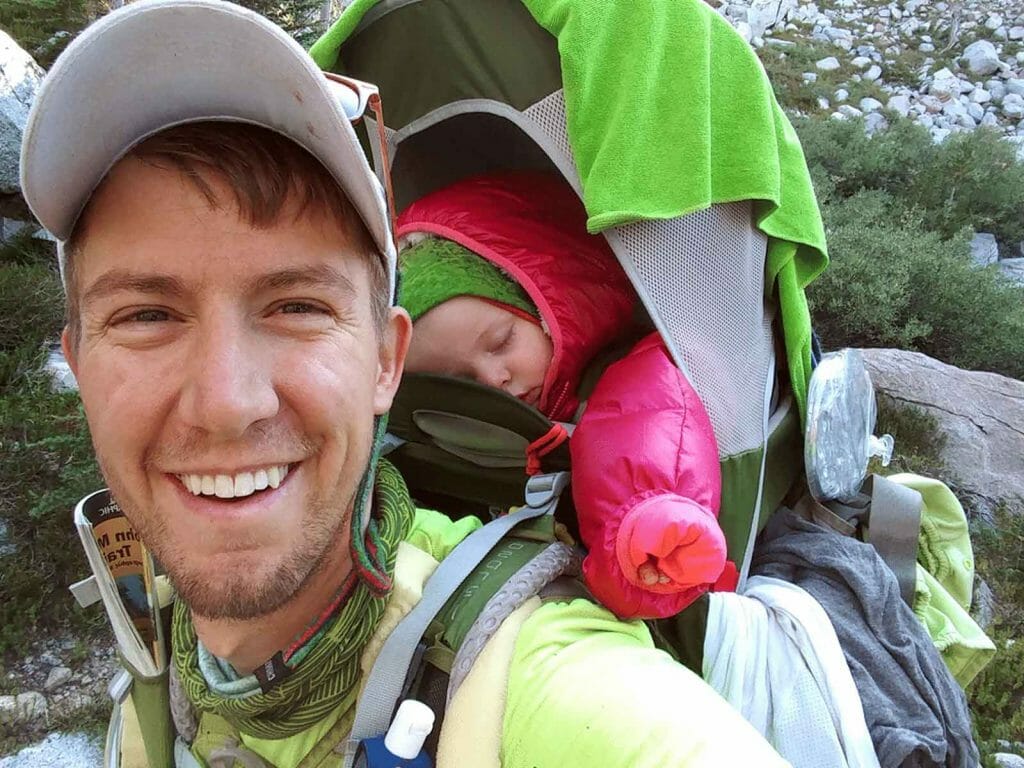
1. The Baby Carrier
The most obvious piece of gear you’ll need, and the one I get asked about the most, is the baby carrier. Let me start by saying, in my opinion:
There is NO brand that sells a backpack baby carrier designed to pack and carry as efficiently and comfortably as a regular pack.
Therefore, even the option I chose has its design flaws, but at the time, this was the option that was most comfortable and had the highest carrying capacity. We chose to go with the Osprey Poco Premium, which is no longer made, so you can find the updated version and its corresponding rain cover on the Osprey website. We used every spare inch of this thing by stuffing items wherever we could. Then, to expand the carrying capacity further, we strapped a pack lid to each side of the carrier and used one for diapers and the other for bottles and formula, plus I wore a day pack on the front.
The adjustment I would make would be simple. Instead of using a backpack carrier and trying to expand its capacity, I would use a front carrier, such as the Ergo 360 or the Infantino Carry On. You want to choose something that is sturdy and comfortable on the hips, and if it has any extra storage, that will help as well. The advantage here is that I can pack my backpack exactly as it needs to be and adjust the way it sits on my back. It comes with the proper padding to protect contact points, and a much larger capacity overall. Baby sits where you can reach them, meaning you can give them toys and snacks more easily. You can also control where their weight goes because they are strapped more closely to your center of gravity.
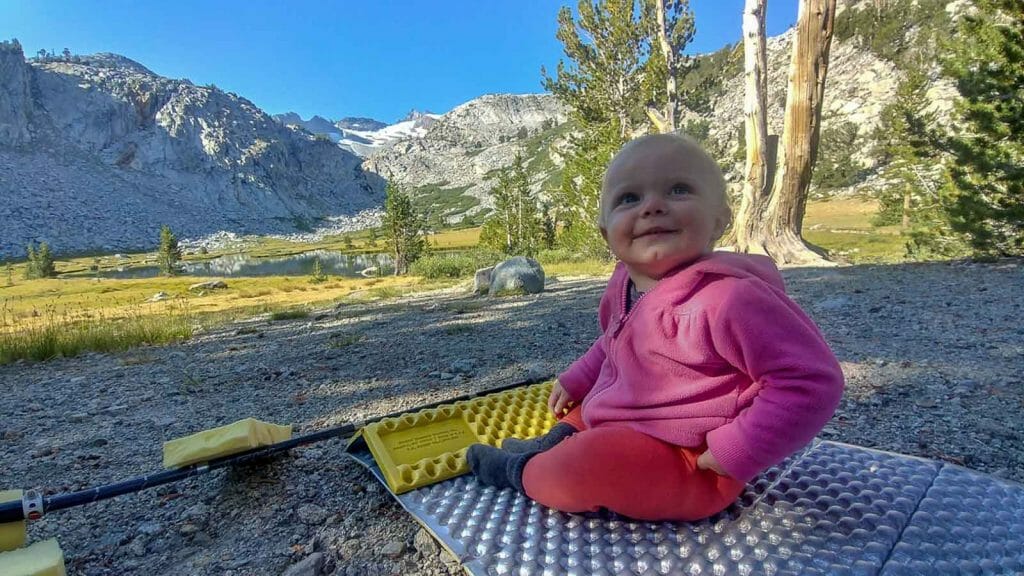
2. Diapers
Another item I get asked about a lot is diapers. Remember, you cannot bury diapers, ever.
There are so many variables here that all take Leave No Trace practices into mind, but it ultimately comes down to two options: disposable and reusable.
Disposable Diapers: Just be ready to carry the weight, meaning that even though you are consuming food, you are picking up some weight with each wet diaper. The main advantage here is that at each resupply you get to ditch that weight. You can even bury any poops and let diapers dry out on a rock while you are in camp. Remember, do not leave them unattended!
Cloth Diapers: I chose to use Buttons Diapers One Size covers and Hemp/Cotton liners. The cloth diapers allowed us to reuse the same liners the whole time. Hemp is much easier to clean and sanitize than the microfiber. Bamboo is another good option. The downside? It takes a very long time to dry the liners in the sun and our baby ended up with a damp diaper for 2 full days on the trail, our biggest parent fail. Some brands sell disposable inserts, but rarely are they truly biodegradable, so it just depends on what works for you.

3. Sleeping Gear
While researching the various ins and outs of backpacking with a baby, I came across a beautiful blog, “Reborn By Adventure”. In her entries, Natasha Moon discusses the various changes they have made and the items they have settled on. One in particular helped us clear a major hurdle to sleeping at altitude: the Patagonia Infant Hi-Loft Down Sweater Bunting. It has proven to be warm, comfortable, packable, durable, and multi-purpose. We have used it with 2 children now. The first slept in it and then used it in the shoulder seasons to run around and play outside. It’s well padded, but soft enough to let them move and play like normal, so no “Christmas Story” shenanigans here.
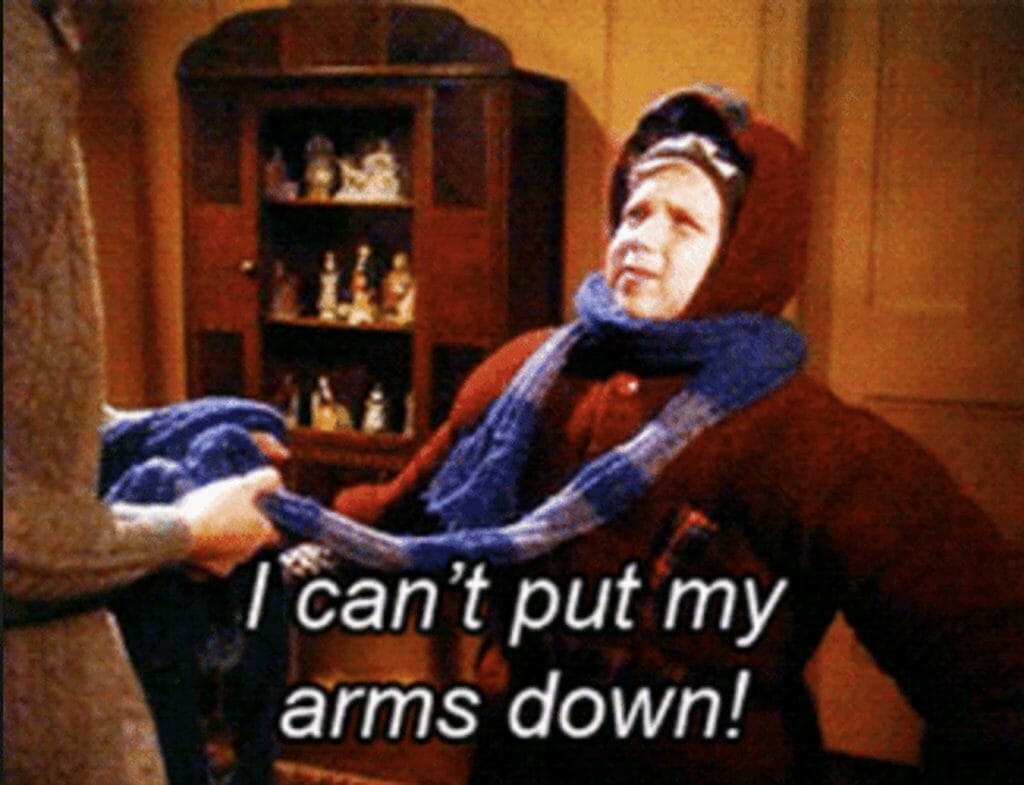
Something that pairs nicely with the sleep bunting is a really light pad. We used the Thermarest Z-Lite Sol, which accordions down for storage. If you feel it is warm enough for the single layer, you can cut the pad down to the size of a baby, otherwise fold it in half and it is plenty for the little one. This was an easy choice, as we use these pads at Lasting Adventures, so I am very familiar with how warm and durable they can be. I should note that babies should not sleep on soft surfaces until they are old enough to really move around if they get caught up in something. This pad is a great option because it is closed-cell foam and doesn’t get too plush.
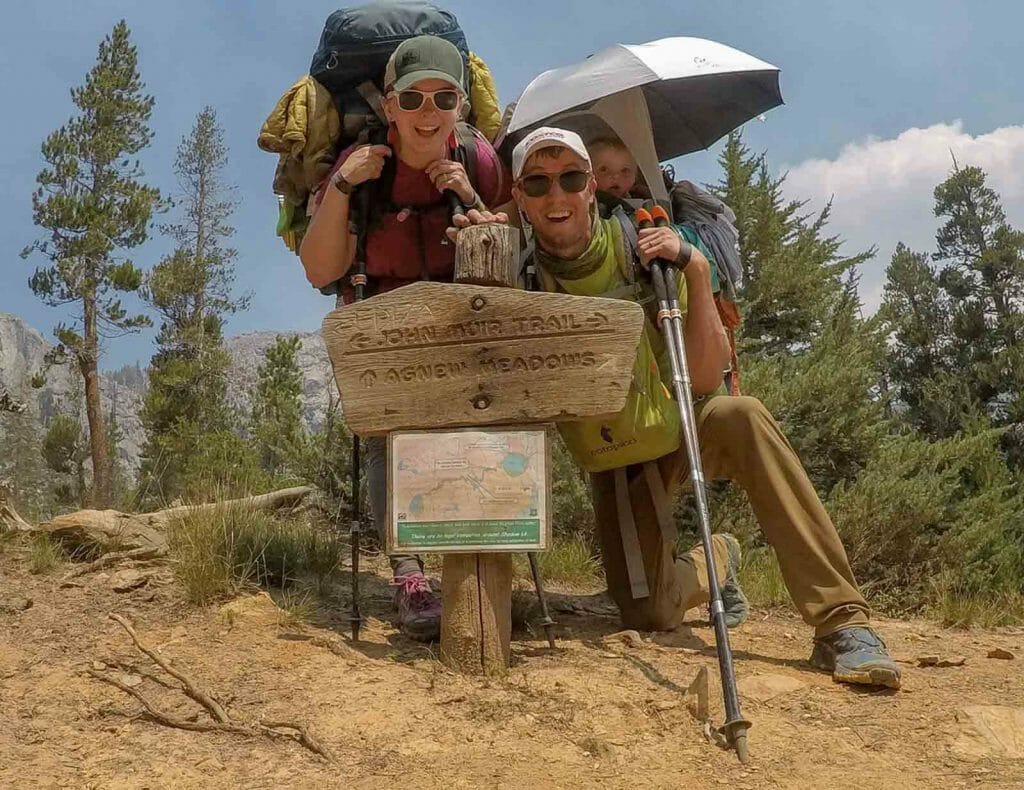
4. The Umbrella
One piece of gear I never thought I would purchase, but now feel we cannot live without, is the hiking umbrella. At first glance, it looks ridiculous, but once you’ve used one, it is a must-have. The brand I use no longer exists, but you can find the one I am referring to here. You want the one with silver on top and black on bottom. The carrier came with a sunshade that you pull out and slip into place. It’s a good design overall and creates the structure for the rain fly, but as a sun shade, it’s not so great. It’s just a thin canvas, so although the UV rays won’t hurt the baby, it gets very hot and muggy underneath. Using the umbrella made it dark and cool underneath there so that our baby could sleep comfortably while we hiked and we knew she was safe. Once I continued on the JMT alone, I kept the umbrella with me because I knew those hot days going over passes wouldn’t feel so bad with that thing over my noggin.

5. Protective Clothing
I couldn’t tell you for the life of me where we found the brand we use, but the clothing is amazing. The company is called Shedo Lane and the quality is great. It’s soft, stretchy, protective, and fun-looking. We got some pink pants, as well as some blue and white striped ones. For the shirts we got grey because it hides stains and dirt well.
We always buy our gear a little bit big if we can, that way each kid can stay in it a little longer and we don’t have to buy as much. She wore those shirts for over a year whenever we went boating or hiking. One of the knees got a hole, but we sewed it up and they worked until she could no longer wear them comfortably. In a few months, our second baby will have a chance to use the adventures clothes out in the wild.
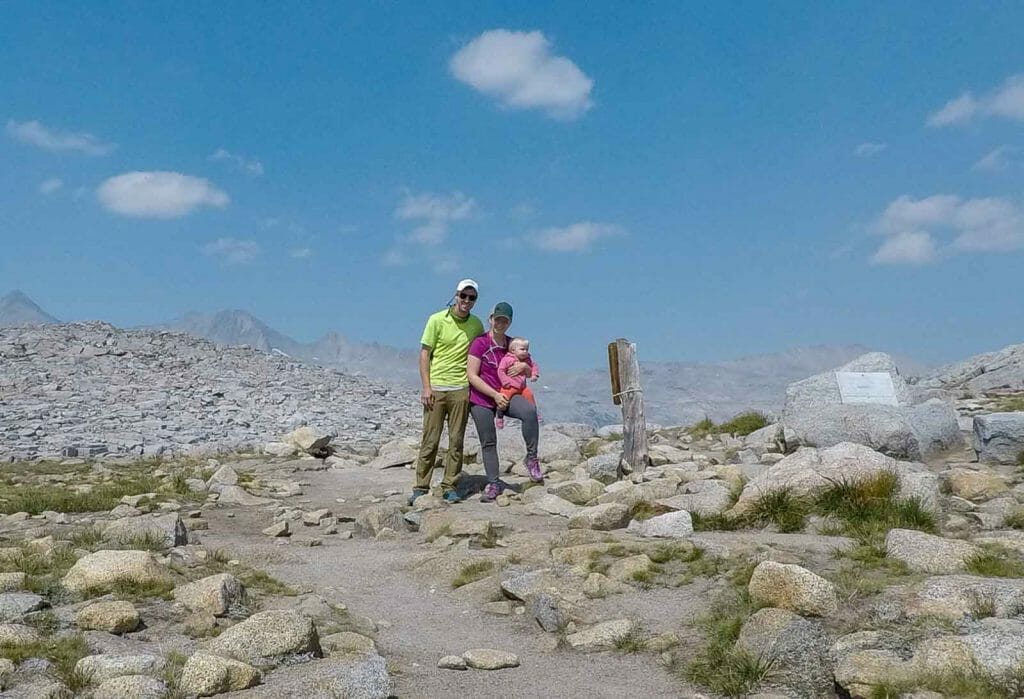
Honorable Mentions
We have a lot of items we really like. Not all of them are critical for us, so I haven’t included them on this list, but I would like to mention these awesome products just the same:
- Dr. Brown’s Bottles are a go-to for us. Our first baby was colicky, so we needed a bottle that would help her get a good seal and vent out unwanted air. We went through about 4 bottle types before we landed on these, one of the cheapest and best working options out there. We took the 4 ounce bottles to save on weight and we shortened times between feedings to help her stay calmer in the carrier. Every 2 hours we would stop, let her eat, and then let her run around for a bit before we continued on for another 2 hours.
- Leki Poles are the pinnacle of great trekking pole design. I never hiked with poles before I became a backpacking guide, but on my first trip I was so uncomfortable from the heavy pack, that I borrowed a pair of poles from a friend and gave them a shot. I have used multiple styles and brands, but Leki delivers better than everyone. It really doesn’t matter what style you get, they will serve you well. The investment in quality up front will give you years of support and put up with years of abuse.
- Dehydrators everywhere! We dehydrated baby food, then ground it up into a powder and used cereal to thicken it up and add calories. It worked out great. Our baby didn’t love it, but she got used to it and we were able to keep her hydrated and well fed.
- The last one I would like to mention is nature. She’s fantastic. Our baby loved playing with the dirt and rocks. We would gather smooth river stones and shave down small sticks until there were no sharp edges and then let her play with them. That way we didn’t have to carry a lot of toys and we could always get her something new if she dropped it somewhere along the way.
MORE
Backpacking With A Baby Part 1: How to Psychologically Prepare
Three Key Factors For Backpacking With Young Kids
Young Adventurers Youth Summer Camp: The Ultimate Adventure for Young Children









